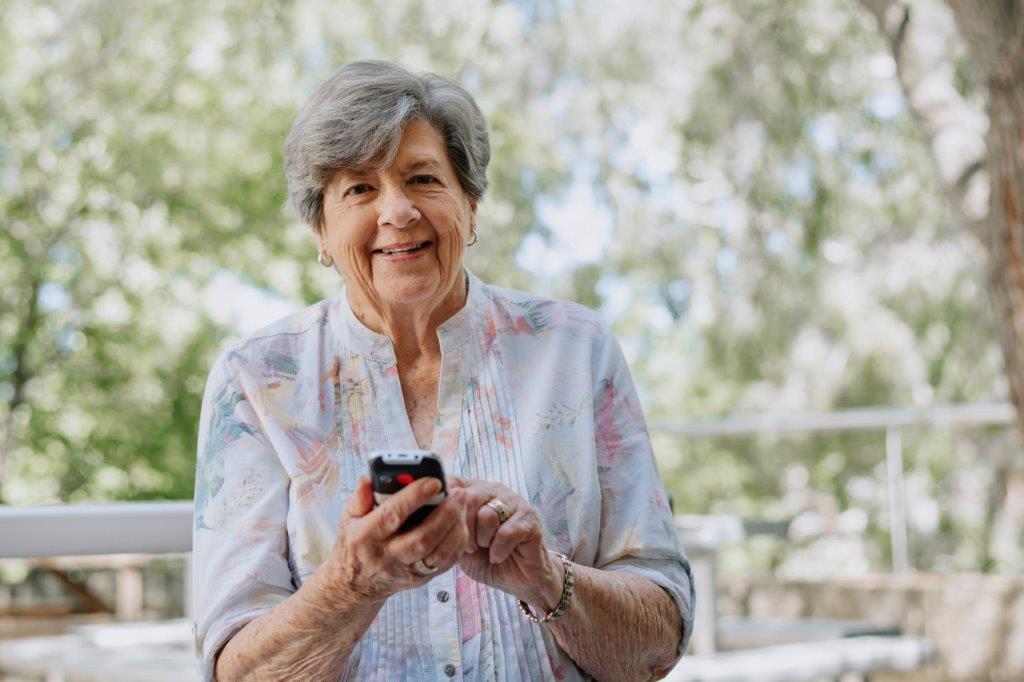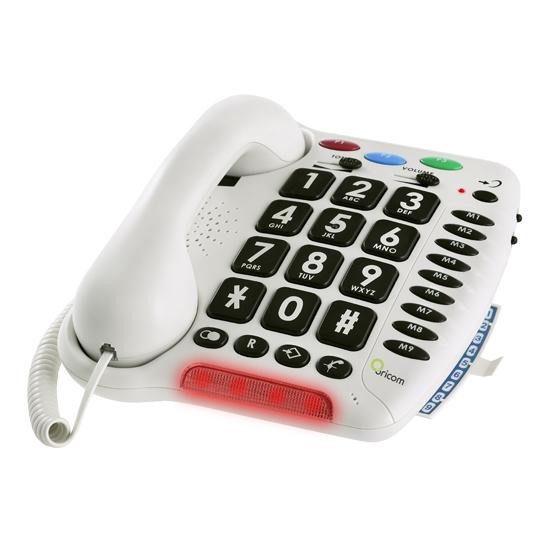Keeping in Touch with Smart Devices and Landlines
While Australia is self-isolating and social distancing during the
Coronavirus pandemic, keeping in touch with friends and  family using smart (electronic) devices and landline telephones has become of utmost importance so we can all stay connected to our loved ones.
family using smart (electronic) devices and landline telephones has become of utmost importance so we can all stay connected to our loved ones.
Many of us take for granted the convenience of sharing information and talking to our friends and family over the phone. However, for people who have a visual impairment, are hard of hearing, have trouble projecting their voice or difficulty pressing small buttons, using a telephone or device can be a frustrating task. Fortunately, there are many products available to assist people to keep in touch.
Most commercially available landline telephones available in Australia should have a raised dot on the number ‘5’ key. This is to help people with a visual impairment or people who dial by touch, to dial without the need for visual cues.
Some other assistive features that are available on a range of phones include:
- Big Buttons: This feature makes the numbers and buttons easier to see and press. The ‘Oricom Care100 Amplified Big Button Telephone’ is one example of big button telephones available.
- Switch adapted: For people who have difficulty pressing small buttons, a large button or “switch” can be attached to some phones to allow one touch answering and when coupled with other features (such as delayed dialing) it can be used to dial.
- One-touch or speed dial: This allows you to dial stored numbers by pressing fewer buttons than the original number.
- Speakerphone: Allows the user to talk hands-free.
- Phone holder: Where a person may not have the grip strength to hold the receiver a product such as the North Coast Quad Phone Holder may assist. It is a U-shaped, plastic covered metal frame with hook and loop fastening strap that acts as a holder for a telephone receiver. It hooks over the user’s hand. This device provides the user more privacy than the speakerphone function.
- Hearing aid compatibility: This feature allows people with telecoil-equipped hearing aids to communicate effectively over the telephone without feedback and without the amplification of unwanted background noise.
- Flashing/vibrating ringer: A flashing light or vibration alerts the user that there is an incoming call, particularly helpful where a person is hard of hearing.
- Voice amplifier: A pitch and volume control feature can adjust incoming speech.
- Volume control: An extra loud ringer is available on a range of phones.
- TTY: TTY is a Telephone typewriter and is a means of communication for people who can type, but may be deaf, hard of hearing or speech impaired. If you know someone who has a TTY, you can still call them by using the National Relay Service (NRS). The NRS can type or read aloud what the other person would like to communicate. (National Relay Service 1800 555 660).

Many people use apps on smart devices to make face to face (video) calls using Skype, Zoom, FaceTime, WhatsApp, Microsoft Teams or similar apps. Smart phones or tablets usually include a range of accessibility settings such as:
- One touch or speed dialing
- Predictive text
- Stored/generic SMS
- Picture messaging
- Speaker phone
- Visual text display
- Magnification
- Audible key identification
- Key layout
- Automatic answering
- Microphone amplification
- Automatic hang Up
- Ringer volume adjustment/receiver amplification,
- Vibrating alerts; and
- Voice to text.
There are also options for people needing just a basic mobile phone that they can simply make a call on or perhaps send a text. For example the KISA phone is a basic mobile that can be customized to the user’s individual needs. The user can call friends and family with a single button, and it includes a GPS tracking service.
Indigo’s experienced health professionals can guide individuals to find the right technology to suit their needs. We can advise people where they can purchase items from and provide information about funding for specialised options.
It can be difficult to choose a phone in a busy store in which there may only a few options available. For accessibility requirements it can be important to be able to try the phone before purchasing to ensure that it will be right for the individual. Indigo’s Hire department has a small range of land line and emergency call phones and some accessories that people can hire for up to four weeks before purchasing.
If you would like more information about communications products or would like to make an appointment, please contact Indigo on (08) 9381 0600, or email help@indigosolutions.org.au.

 Translate
Translate